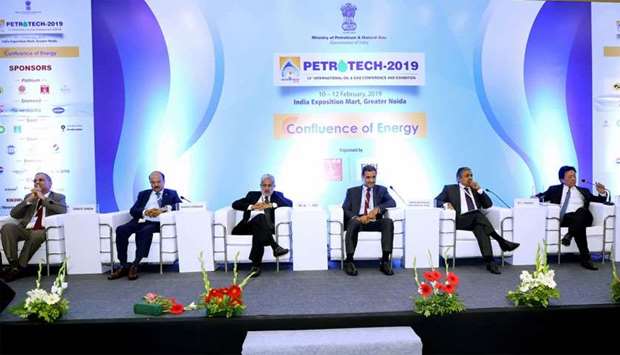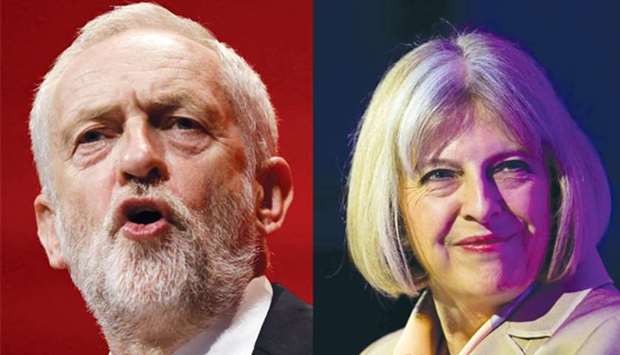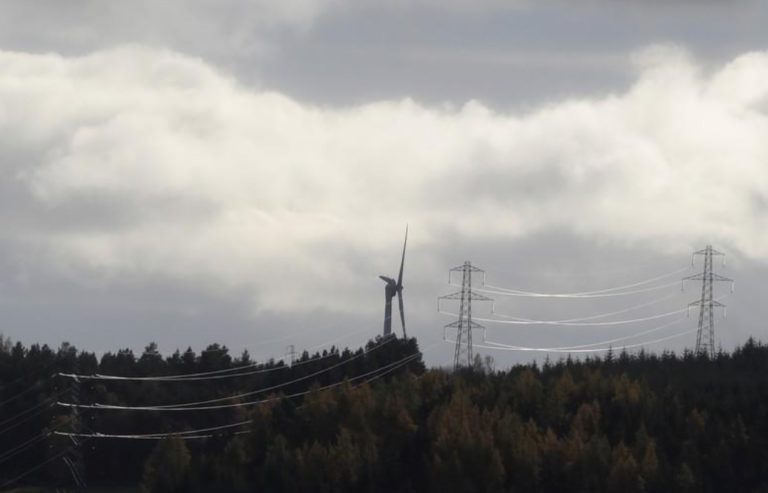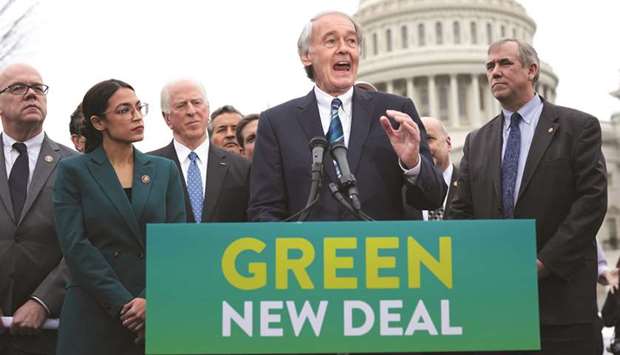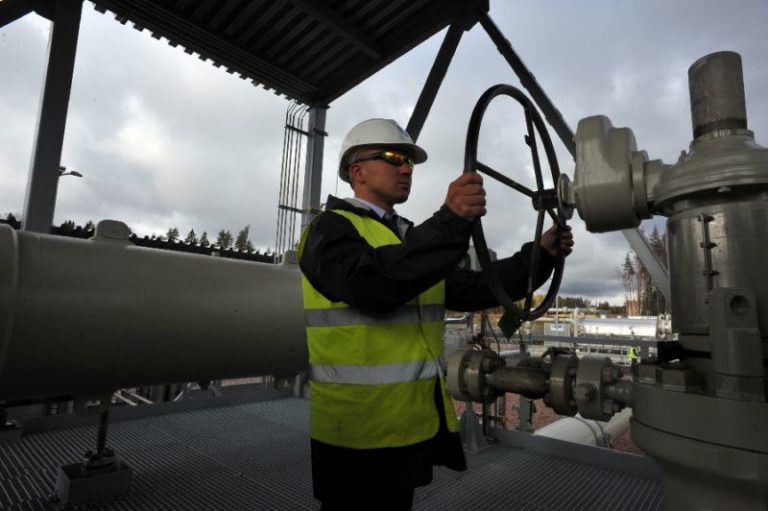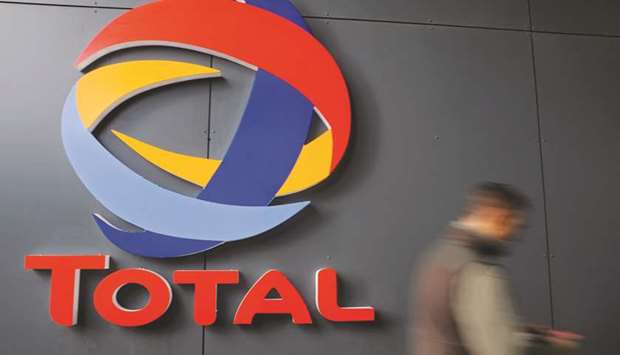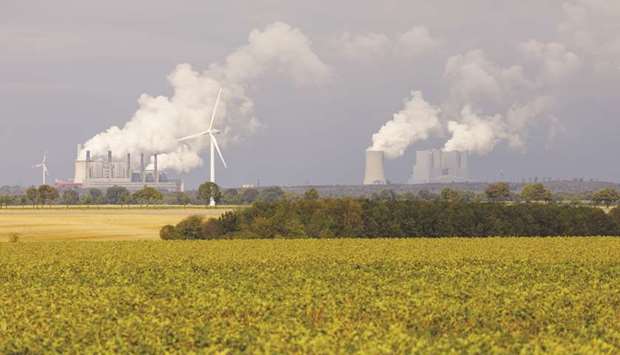French energy major Total said its net adjusted profit rose 10% in the final quarter of 2018, lifting its full year earnings by more than a quarter after record oil and gas production.
Total said yesterday that output reached an all-time high of 2.8mn barrels of oil equivalent per day in 2018 thanks to the start-ups of various operations and increased production in Australia, Angola, Nigeria and Russia.
It reported a 28% rise in full-year profit to $13.6bn, following on from strong results from other oil majors.
Total also announced yesterday a major, new discovery off the coast of South Africa.
Total said its results would enable it to continue its shareholders’ return policy announced last year.
After increasing dividends by 3.2% in 2018, it plans a 3.1% rise in 2019.
It will also buy back $1.5bn of its shares in 2019 after buying back the same amount last year.
Total added it would eliminate its scrip dividend scheme from June 2019.
T-Mobile US
T-Mobile US Inc yesterday reported quarterly revenue and profit that beat Wall Street estimates, as the wireless carrier added more customers than expected after expanding its network, particularly in US rural markets.
T-Mobile said it added a net of about 1mn so-called postpaid phone subscribers in the fourth quarter compared with 891,000 additions a year earlier.
The company’s net income fell to $640mn, or 75 cents a share, in the fourth quarter, from $2.71bn, or $3.11 a share, a year earlier, when it recorded a big one-time tax related gain.
Revenue rose to $11.45bn from $10.76bn.
Analysts were expecting revenue of $11.39bn and profit of 69 cents per share, according to IBES data from Refinitiv.
Twitter
Twitter shares took a pounding yesterday as an unsettling update on its global user base offset upbeat figures on revenues and profits in the past quarter.
The short-messaging platform said it posted a $255mn profit in the final three months of 2018, compared with $91mn a year earlier, as revenues rose 24% to $909mn.
Monte dei Paschi
Italian bank Monte dei Paschi di Siena said yesterday it had cut its financial forecasts in a restructuring plan to 2021 to take into account weaker-than-expected economic conditions.
Despite the gloomier outlook, the lender posted a full-year profit of €279mn ($316mn) in 2018 — its first since 2015.
That figure includes €202mn of restructuring charges, the bank said.
The bulk of those charges weighed on the fourth quarter, which ended with a loss of €101mn.
Non-performing loans now account for 16.4% of total loans, down from 35.8% less than two years ago but still high when compared to a ratio of less than 10% for healthier banks like Intesa Sanpaolo and UniCredit.
DNO
Oil firm DNO is looking to buy more assets after its recent takeover of London-listed Faroe Petroleum to further expand its North Sea presence.
Oslo-listed DNO, which produces most of its oil in the Kurdistan region of Iraq, clinched a hostile takeover bid for London-based Faroe Petroleum, valuing Faroe at £634mn ($823mn), in January.
DNO posted a higher-than-expected fourth quarter operating profit of $230mn, up from $25.7mn a year before and beating a $68.5mn forecast in a Reuters poll of analysts.
The earnings increase came as a result of a change in revenue recognition criteria.
Kellogg
Kellogg Co reported a fourth-quarter loss yesterday as it suffered the effects of a strong dollar and the costs of an ongoing restructuring and preparations for Brexit.
Net loss attributable to Kellogg was $84mn, or 24 cents per share, compared with a profit of $417mn, or $1.20 per share, a year earlier.
Excluding items, Kellogg earned 91 cents per share, beating analyst expectations of 88 cents, according to Refinitiv data. Kellogg said net sales rose 4.1% to $3.32bn in the quarter, ended December 29, helped by acquisitions, including its 2017 purchase of RXBAR.
The company said currency translation hurt sales by 3%.
Tata Motors
Indian automaker Tata Motors Ltd lowered its profit margin guidance for the current fiscal year after it posted its biggest quarterly loss yesterday, hurt by an impairment charge for its British luxury car business Jaguar Land Rover (JLR). Tata Motors expects the EBIT (earnings before interest and tax) margin for the fiscal year 2018-19 ending March 31 to be “marginally negative” compared with an earlier guidance of breaking even, chief financial officer, PB Balaji said.
Tata Motors’ loss came at Rs269.93bn ($3.78bn) for the three months ended December 31, compared with a profit of Rs11.99bn in the year-ago period. Revenue rose 5.8% to Rs762.65bn.
The company took a non-cash charge of Rs278.38bn ($3.9bn) to cover the impairment at JLR in the three months to December 31.
Voestalpine
Specialty steelmaker Voestalpine expects further downward pressure on earnings from a slowing European economy, it said yesterday after a swing to a quarterly loss knocked 5% off its share price.
Voestalpine issued its second profit warning in four months in January and its statement yesterday sent its shares down as much as 5.6%. Finnish stainless steel maker Outokumpu and German steelmaker Salzgitter also warned of weaker profits.
Voestalpine, whose share price fell by nearly half last year, reported a net loss of €40.5mn ($46mn) for the October-December quarter.
That compared to a net profit of €167mn in the same period a year earlier.
Marathon Petroleum
US refiner Marathon Petroleum Corp yesterday posted a 53% fall in quarterly profit compared with a year earlier, when it recorded a $1.5bn gain related to the US tax overhaul.
Net income attributable to Marathon fell to $951mn, or $1.38 per share, in the fourth quarter ended December 31, from $2.02bn, or $4.13 per share, a year earlier.
Total revenue rose to $32.54bn from $21.24bn.
Norwegian Air Shuttle
Struggling low-cost airline Norwegian Air Shuttle said yesterday it would sacrifice growth in a bid to return to profitability after posting losses for the second year in a row.
Norwegian, Europe’s third budget airline behind Ryanair and Easyjet, has been hit by an extended period of financial turbulence after years of unbridled expansion.
It announced a net loss of 1.46bn kroner ($170mn, €150mn) in 2018, after dropping 1.79bn kroner the previous year.
“The company was hit by several unforeseen challenges during 2018.
Continued tough competition and high jet fuel prices affected the results, in addition to significant costs related to Rolls Royce engine issues on the Dreamliners,” the company said in a statement.
ArcelorMittal
ArcelorMittal, the world’s largest steelmaker, forecast yesterday a moderate expansion in global steel demand in 2019 after a healthy market drove its 2018 earnings to their highest in a decade.
The company said it expected demand to grow by 0.5 to 1% this year after rising 2.8% in 2018.
“Although this is a more moderate level than 2018, market fundamentals do remain positive,” chief financial officer Aditya Mittal told a news conference.
Net debt at the end of 2018 was at $10.2bn, slightly up from the $10.1bn at the end of 2017.
ArcelorMittal, which returned to an investment grade rating last year, is seeking to reduce debt to below $6bn.
The company reported fourth-quarter core profit (EBITDA) of $1.95bn, a 9% decline from a year earlier as prices declined.
That was broadly in line with the company-compiled consensus of $1.96bn from a group of about 20 brokers. For the full year the figure was $10.27bn.
Publicis
Publicis shares slumped by more than 10% yesterday, as the French advertiser’s weaker-than-expected quarterly revenue failed to convince investors and analysts.
The world’s third-biggest advertising firm on Wednesday reported a 0.3% fall in fourth-quarter net revenue to about €2.49bn ($2.83bn), excluding the impact of acquisitions and foreign exchange, far below market expectations of growth of 2.5%.
Outokumpu
Finland’s Outokumpu warned yesterday that first-quarter profit would weaken as high distributor inventory levels pressure the stainless steel market, sending its shares sharply lower.
In the fourth quarter the firm’s adjusted earnings before interest, taxes, depreciation and amortisation (EBITDA) rose 9% to €89mn, in line with analysts’ average forecast of 89.2mn from a Reuters survey.
However the company forecast that EBITDA in the January to March period would be below €89mn, sharply down from 133mn a year earlier.
Societe Generale
France’s Societe Generale cut its profitability target after it was hit by a fourth quarter market downturn, joining other European banks battling a tough climate.
The country’s third largest listed bank expects its return on tangible equity to be between 9 and 10% in 2020, down from a previous target of 11.5%. Societe Generale also said it would not meet its 3% revenue growth target after revenue fell 6.3% in the fourth quarter to €5.93bn ($6.7bn), in line with analyst forecasts collected by Infront Data.
The bank issued a profit warning three weeks ago, hitting its shares.
Volvo Cars
China-owned Volvo Cars yesterday said the company sold more than 642,000 cars in 2018 — a record — but net profits dipped.
Net income for the full year was 9.76bn kronor, (1bn dollars), down 4.5 per cent compared to 2017. Revenue rose 21 per cent to 252bn kronor.
The car maker said it sold 642,253 cars in 2018 — its fifth consecutive year of record sales.
SUV models, including the XC60 and XC40 series, accounted for roughly half of Volvo’s sales.
In China, the world’s largest car market, it sold about 130,000 cars — up over 14 per cent compared to 2017 although the overall market in the Asian powerhouse declined for the first time in two decades. In the United States, Volvo’s second largest market, sales in 2018 increased 20 per cent year-on-year to about 98,000 cars.
Norsk Hydro
Norwegian metals producer Norsk Hydro warned it would miss its 2019 savings targets after falling far short of fourth-quarter earnings forecasts due to restricted output in Brazil, sending shares down 8% to their lowest in two years.
Higher costs also impacted underlying operating profit, which fell 85% to 534mn Norwegian crowns ($62.48mn) versus the 1.45bn crowns expected by analysts in a Reuters poll.
“Our results are reflecting the challenging situation we face in Brazil and higher raw material costs,” chief executive Svein Richard Brandtzaeg said in a statement.
Securitas
Sweden’s Securitas, the world’s biggest security services group by revenue, missed market forecasts for fourth quarter sales growth yesterday due to slowing business in Europe and North America.
The group announced late on Wednesday programmes to modernise its IT platform, reduce costs and boost margins in North America, and flagged plans for a similar programme for its European operations.
Securitas, a rival of Britain’s G4S, reported a fourth-quarter operating profit before amortisation of 1.5bn crowns ($161mn) yesterday, up from 1.3bn crowns a year earlier.
But that lagged a Reuters poll forecast of 1.4bn as organic sales growth slowed to 5% from 6% in the same quarter of 2017.
The group, whose services range from manned guarding and alarm surveillance to airport security, also proposed a slightly lower than expected dividend of 4.40 crowns per share.
Sanofi
French drugmaker Sanofi yesterday pledged further increases in full-year profit helped by new drug launches and its reorganisation efforts.
It forecast an increase of 3-5% in 2019 earnings per share as it posted slightly higher-than-expected quarterly earnings, powered once again by its rare diseases Genzyme unit.
Sanofi, whose struggle to find new products has weighed on previous earnings as diabetes patents expired, is placing its hopes on the success of its new rare blood disorder franchise and a continued upswing for its eczema treatment Dupixent.
Sanofi’s fourth-quarter business net income was up 4.3% at constant exchange rates to €1.36bn, while revenue rose 3.9% to 9bn.
Analysts polled by Reuters in partnership with Infront Data had on average been expecting a business net income of €1.32bn on sales of 8.9bn.
Sales at Genzyme surged 37.4%. Revenue at the diabetes and cardiovascular unit, however, fell 11.3%.At a conference in the US earlier this year, newly-appointed chief financial officer Jean-Baptiste de Chatillon said the division would “still face headwinds” in 2019.
DNB
DNB, Norway’s largest bank, reported lower-than-expected fourth-quarter earnings yesterday while boosting its full-year dividend.
The company’s pre-tax profit before impairments rose to 7.32bn Norwegian crowns ($856.4mn) from 7.26bn a year ago, lagging the average forecast of 7.58bn in a Reuters poll of analysts.
DNB plans to pay a 2018 dividend of 8.25 crowns per share, up from 7.10 crowns the previous year, while analysts on average had expected a payout of 7.90 crowns.
AGL Energy
AGL Energy, Australia’s top power producer, reported a 10% rise in half-year underlying profit, but warned that profits would be weaker in the next six months as it steps up spending on maintaining its ageing coal-fired plants.
Earnings in the second-half of the financial year that started in July will also be hit by lower gas sales to large business clients, a continued price war for customers and retail electricity price cuts in the state of Victoria, new chief executive Brett Redman said yesterday.
AGL, which has the nation’s biggest fleet of coal-fired power plants, said it would hold off from buying back shares.
The firm yesterday abandoned its three-year cost-saving target to 2021 and halved its target for the year to June 2019 to A$60mn ($43mn) taking into account the extra spending on its coal fleet.
AGL’s underlying profit for the six months to December 31, which excludes one-off items, rose to A$537mn from A$487mn at the same time last year, boosted by strong wholesale power prices.
AGL said it was on track to hit the midpoint of its forecast range for underlying profit of between A$970mn and A$1.07bn in the year to June, roughly flat on last year.
Revenue slipped 1.8% to A$6.34bn.
Prudential Financial
Prudential Financial Inc on Wednesday reported a 12% drop in adjusted operating income, partly due to a loss in its individual life insurance business and declines in other units.
The US No 1 life insurer by assets reported adjusted operating income, which excludes realised gains and losses from investments, of $1bn, or $2.44 per share, compared with $1.2bn, or $2.69 per share, in the year-ago quarter.
Analysts had expected $2.78 per share, according to IBES data from Refinitiv.
Adjusted operating income for PGIM, Prudential’s asset management arm, fell 20.6% to $243mn from $306mn a year earlier, the company said.
PGIM managed $1.16 tn in assets as of December 31, $6bn more than at the end of the year-ago quarter.
Prudential’s US individual life insurance unit reported a $26mn adjusted operating income loss compared to $98mn in income a year ago.
MetLife
US life insurer MetLife Inc missed analysts’ estimate for fourth-quarter revenue on Wednesday, hit by weaker underwriting fees in its Asia and Europe, the Middle East and Africa (EMEA) markets.
Revenue was also weighed down by weaker capital markets in Asia and the impact of the US tax overhaul on the EMEA unit, the company said.
Total revenue fell 1% to $15.66bn, missing analysts’ average estimate of $15.93bn, according to IBES data from Refinitiv.
MetLife’s net investment income slid to $3.46bn from $4.45bn a year earlier, driven by changes in the estimated fair value of certain securities.
Adjusting for those changes, net investment income rose 7%.Net income fell to $2bn from $2.3bn.
Earnings at the company’s US retirement business more than doubled, buoyed by volume growth, higher investment margins and lower taxes, helping overall adjusted profits rise 38% in the region. Excluding one-time items, MetLife earned $1.35 per share. Analysts on average had expected earnings of $1.28 per share.
Zurich Insurance
Zurich Insurance announced a dividend increase yesterday following a 24% jump in annual profit, and said that would set a floor for future payouts.
Europe’s fifth-largest insurance company said its cost savings plan was on track and business operating profit (BOP) rose 20% last year to $4.6bn, driven by underlying growth across the business, particularly in life, and underwriting improvements in property and casualty.
Still, insurance premiums rose modestly, to $49.5bn from $49.1bn in 2017, and were unlikely to show much growth this year.
“I expect top line to be pretty flat in 2019,” finance chief George Quinn told reporters.
Zurich said it was well on track to deliver on its financial targets for the 2017-2019 period with $1.1bn in cumulative net cost savings achieved.
“We still have about $400mn (in savings) to deliver pretax. That would be rightly the biggest driver of the additional improvement that we expect to see from the group in 2019,” Quinn said.
